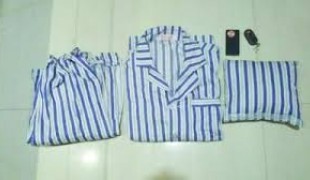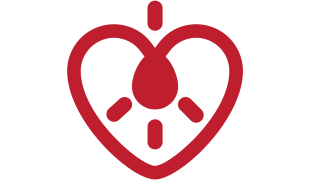- 3422
- 238
- 15
- 10
- 0
- Help Ukraine
About the solution
Aly Cat, Bob’s caregiver, sometimes had to use a Hoyer lift and sling in order to transfer him safely.
Their routine was to stand Bob up, pull up/down his pants, and then place him into his wheelchair or onto the toilet or bed. Using the sling they were unable to do this. The first two days Bob would be transfered out of his wheelchair and onto the bed, put his pants down, roll him back into the sling, and then place him on the toilet.
This took a lot of time, so they had to think about a solution. They read several magazines articles about clothing for wheelchair users, but they were usually made of velcro or snaps and ran between $40 – $60 per pair.
But according to the patient, he didn’t want any of this types clothing for two reasons:
1. He had just bought a bunch of L.L.Bean flannel and fleece lined jeans to help him keep warm this past winter and did not want to give them up.
2. He was concerned with the timing it would take to get the pants on with velcro and snaps, the elements (would wind be able to get into the pants via snaps), and the wear and tear on the velcro.
So they had to think about other options, and they came up with the idea of using zippers.
They brought Bob’s pants to their local tailor and asked if she would be able to put zippers along the outside seams. She said "no problem" and that she would get sleeping bag zippers to put in to help with the wear and tear.
Bobby was able to keep all his own pants and shorts and it cost $30 per zipper.
Adapted from: http://bit.ly/2vYfUjd
这些解决方案不应包括使用药物,化学品或生物制品(包括食品);创伤性设备;冒犯性的,商业或内在危险的内容。该解决方案未经医学验证。请谨慎进行!如果您有任何疑问,请咨询健康专家。
DISCLAIMER: This story was written by someone who is not the author of the solution, therefore please be advised that, although it was written with the utmost respect for the innovation and the innovator, there can be some incorrect statements. If you find any errors please contact the patient Innovation team via info@patient-innovation.com
-
-
350
-
0
-
4275

Collaborator Pierluigi Mantovani creates Evolution Devices - solutions that aim to transform Multiple Sclerosis Management
CAREGIVING
BODY BALANCE: Maintaining body balance
STANDING UP: Standing up from a seated position
WALKING: Walking
Multiple Sclerosis
Assistive Daily Life Device (to help ADL)
Walking Aid (wheelchair/walker/crutches)
App (Including when connected with wearable)
AI algorithm
Body-Worn solutions (Clothing, accessories, shoes, sensors...)
Restoring mobility
Regaining sensory function
Managing pain
Promoting self-management
Preserving Organ Function
Managing Neurological Disorders
Maintaining Balance and Mobility
To improve Treatment/Therapy
Preventing (Vaccination, Protection, Falls, Research/Mapping)
Raise awareness
Caregiving Support
General and Family Medicine
Internal Medicine
Medical Genetics
Neurology
Physical Medicine and Rehabilitation
United States
-
-
-
574
-
0
-
6930

Boy develops special clothes for his paralyzed grandfather
(SELF)-CARE: DRESSING: Dressing independently.
CAREGIVING
Paralysis
Spinal Cord and Nerve Root Disorders
Cervical spinal cord injury/Tetraplegia
Body-Worn solutions (Clothing, accessories, shoes, sensors...)
Assistive Daily Life Device (to help ADL)
Difficulty coordinating movements
Stiffness or rigidity (difficulty moving)
Paralysis of the legs and lower body
Muscle weakness
Managing Neurological Disorders
Caregiving Support
General and Family Medicine
Neurology
Orthopedics
Rheumatology
China
-
-
-
554
-
0
-
7474

Slacks with zippers on both sides for patients who have to stand up in public
CAREGIVING
(SELF)-CARE: DRESSING: Dressing independently.
Amyotrophic Lateral Sclerosis
Strategy/Tip
Body-Worn solutions (Clothing, accessories, shoes, sensors...)
Tremors
Muscle cramps or spasms
Stiffness or rigidity (difficulty moving)
Muscle weakness
Trouble with fine motor skills (e.g., writing, buttoning clothes)
Sleep disturbances
Numbness or tingling in the extremities
Restoring mobility
Managing pain
Promoting self-management
Managing Neurological Disorders
Promoting inclusivity and social integration
Preventing (Vaccination, Protection, Falls, Research/Mapping)
Caregiving Support
General and Family Medicine
Medical Genetics
Medical Oncology
Neurology
Orthopedics
Physical Medicine and Rehabilitation
Rheumatology
United States
-
 zh
zh